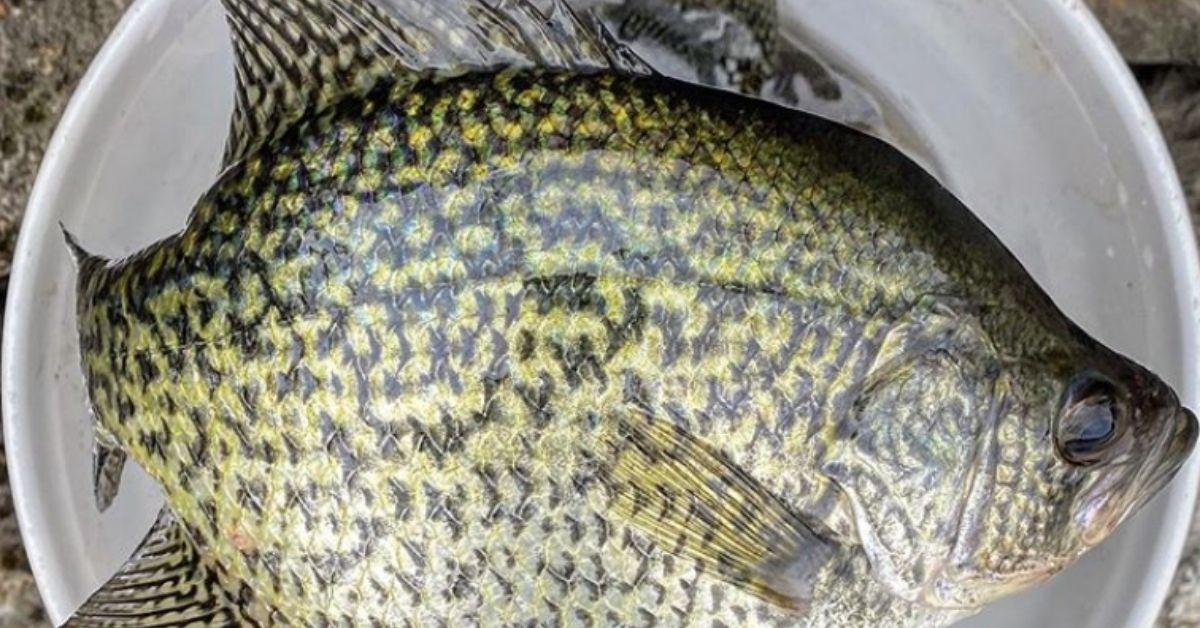3 Things You NEED TO Know About Fishing The Crappie Spawn
The Crappie Spawn happens every spring when the water temperatures reach above the 60-degrees. Depending on where you live, the crappie spawn can be anytime from early March to the middle of May.
Like other panfish, crappie build spawning nests in shallow water generally ranging between 1-6 feet of water. Male crappie build nests by aggressively brushing their caudal (bottom) fins like brooms in order to clear the ground for a spawning nest. Once built, male crappie will defend their nests at all costs.
Now that you what crappie are doing during the spawn, here are 3 things to remember when fishing the crappie spawn:
1) Look For Brush, Cover, or Reeds
Credit: Dyang Bass
Fishing shallow cover during the spawn is one of the easiest ways to target crappie. Crappie will spawn around hardcover like brush, docks, long-stemmed reeds, and cattails. Either manmade or natural cover provides crappie with protection from predators and wind during the spawn.
2) Heat Check! (Find The Warm Water)
Credit: Dyang Bass
Crappie begins spawning once water temperatures reach above 60 degrees. Usually, this happens right after smallmouth bass and just before the largemouth bass spawning period. The northern section of lakes and the headwaters of reservoirs usually have the warmest water in the early spring, which means the crappie spawn typically starts first in those areas first.
3) Only Take What You Need
Fishing during the crappie spawn is the easiest time for anglers to catch both quality and quantity. With that being said, we love a good old fashion fish fry, but it's crucial to respect guidelines and apply reasonable harvest during the crappie spawn.
Like most fish, crappie are the most risk during the spawn, and over-harvests can negatively impact the future of crappie fishing. Only take what you need, let the others swim off for another day. Harvest responsibly and release trophy-sized fish. Crappie in the 9-12 inch range are the ideal size keeper crappie.
Bonus Tip: Bring The Right Gear
PC: Dyang Bass
Knowing when to catch crappie and where to catch crappie is great, but you can't actually bring them in without the right equipment.
The Best Crappie Fishing Rods
PC: Dyang Bass
Choose virtually any ultralight to the medium-light spinning combo spooled with light monofilament or fluorocarbon. Having a light combo will help you cast small lures and rigs at panfish much more effectively.
The Best Lures For The Crappie Spawn
I've had the most success using micro-jigs rigged with soft plastics under a small bobber. Since most fish will be pushed up shallow next to brush, I typically use a light jighead rigged with a soft plastic or live bait and suspend that 2-4 feet below the surface. Slip bobbers or the classic pinch-on style will both work but a slip bobber is much easier to cast in confined areas.
1/16-1/32oz jig heads are my preferred choice when fishing soft plastics under a bobber for spring crappie but I'll switch to the classic bobber, weight, and small gold hook presentation with live fathead minnows or redworms.
When trying to locate spawning crappie using search baits like a small crank, swimbait, or inline spinner is a good way to eliminate the water quickly. I use a panfish crankbait like Karl's Whipper Snapper to locate fish; once I've found the crappie, it's bobber fishing all the way.
Everything You Need To Target The Crappie Spawn
4lb monofilament is a great starting point for crappie anglers in the Spring. If you're looking for less stretch and more sensitivity, go with fluorocarbon.
Karl's Lil Twitchy
Karl's Lil Twitchy is a minnow profile panfish bait you can easily thread onto a light jig head. Add a bobber 1-3 feet above your jig and plastic and target shallow water crappie spawning areas.
Karl's Bantam Jerkbait
Karl's Bantam jerkbait will help you cover water and target big fish during the spawning periods.
Karl's Mini Minnow
The classic look and lifelike twitching action from Karl's Mini Minnow make it a staple for crappie anglers everywhere.
Crappie Fishing Bobbers
Quality pencil-style fishing bobbers are crucial when targeting suspended fish. Bobbers allow you to keep your bait presented in the target zone much longer than other baits.
Stickies Aberdeen Hooks
Tie a Stickies Aberdeen Hook to your line, add a split shot weight 6 inches above your hook. And finally, attach your bobber a couple of feet above your weight. Add some bait, and you're good to go!
Crappie Crankbaits
Use shallow water panfish crankbaits to target fish relating to brush, docks, and cover. Karl's Amazing Whippersnapper medium diving crank will deflect off cover preventing it from getting snagged while enticing bites from the slabs hiding in the brush.
Crappie Fishing Rods
The 13 Fishing Ambition Youth Spinning Combois the perfect little crappie combo. Its light power and compact size make casting to shallow water targets much easier than a long stiff pole.
Spool your rod with a light line (like we talked about), and you'll be dialed in for the crappie spawn.
That's it! Now go get outside and get fishing during one of the best times of the year for chasing crappie. Tight lines!
Updated March 29th, 2022 at 7:49 AM CT


